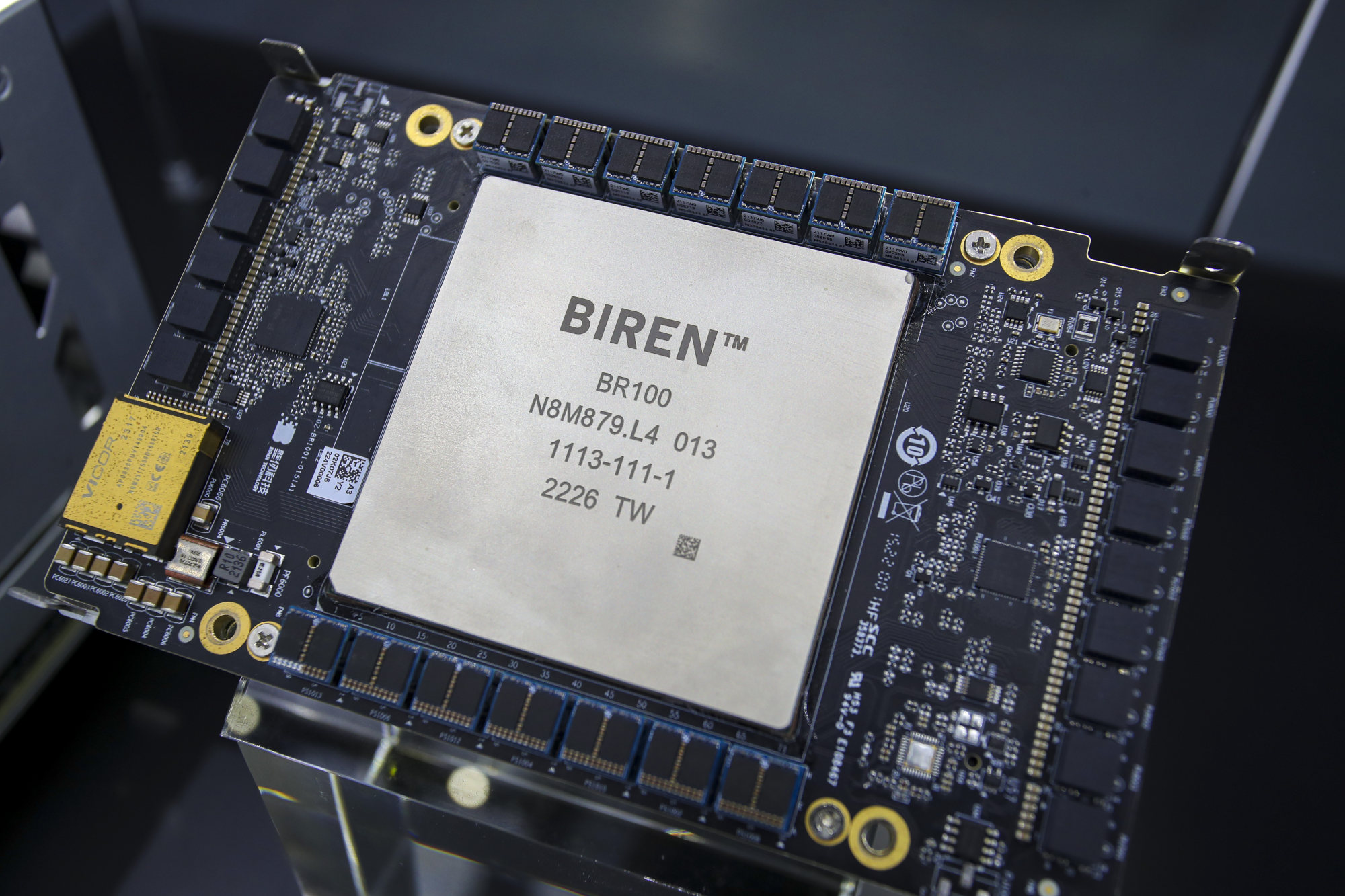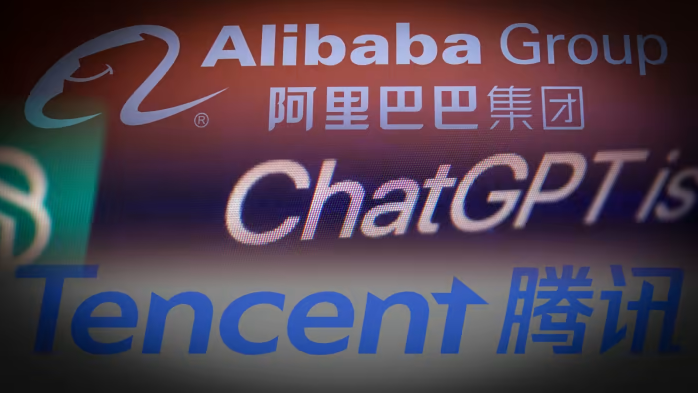China lags behind in ChatGPT race because of chip shortage
- Tram Ho
Challenges from the shortage of advanced chips
Since Microsoft-backed startup OpenAI launched ChatGPT in November last year and quickly reached 100 million users in just two months, a number of the world’s leading technology corporations have moved forward. system integration or seek to develop AI tools with similar features to compete. China, of course, is not out of this competition as a series of tech giants such as e-commerce giant Alibaba, internet search company Baidu, social networking and video game provider Tencent, have all joined the ranks. in turn announced its own AI chatbot development projects.
However, the competitive ambitions of Chinese technology companies are forecast to encounter one major obstacle: a shortage of advanced chips.
According to experts, in order to train large language models (LLMs) needed for AI tools like ChatGPT, China needs to use a large number of graphics processing units (GPUs). In particular, Nvidia’s A100 chip launched in 2020 is the most powerful product. With a price tag of US$10,000, this graphics chip is optimized for machine learning and specialized in servers in data centers and is considered an essential component of the AI industry.

Training large complex language models like ChatGPT requires tens of thousands of graphics processing units (GPUs) (Source: SCMP)
According to a study from TrendForce, deploying a large number of high-performance GPUs, like the A100, will significantly reduce the time it takes to train AI, which requires processing huge amounts of data. Reports show that the number of training parameters of the ChatGPT engine operating model has increased from 120 million in 2018 to nearly 180 billion in 2020.
“The number of GPUs needed to commercialize models like ChatGPT is expected to exceed 30,000,” said TrendForce, making a hypothetical estimate of systems that would use all of Nvidia’s A100 graphics chip. .

Nvidia’s A100 graphics card (Source: Nvidia)
However, last August, the administration of US President Joe Biden issued a ban on Nvidia from selling the A100 and the powerful H100 datacenter GPUs to customers based in China, if not yet licensed. permission. This is part of efforts by the US government to prevent Chinese companies from having access to advanced chips. Advanced CPUs and GPUs from companies like Intel, AMD, and Nvidia are all being widely used by China’s AI cloud service providers.
Nvidia later said it offered an alternative product line with lower specifications for Chinese customers, which included the A800 GPU. The performance of this type of graphics chip has been downgraded to meet export requirements. According to the sales manager of Sitonholy, an Nvidia partner in China that provides solutions for AI servers and high-powered computing devices, this alternative still provides enough computing power according to the specifications. current needs of the majority of customers.
However, using graphics chips with lower performance than A100 to meet the needs of developing tools that compete with ChatGPT is a completely different story. In a recent closed-door conference, an AI technology entrepreneur from the China Association of Artificial Intelligence said that the US can surpass China in cloud computing power, mainly because of its advantage. about GPUs.
“We don’t have a powerful graphics chip like the Nvidia A100, and we can overcome it by using weaker chips, in large quantities to make up for the lack of quality. However, the processing power is still the same. extremely important and decisive factor in today’s competition,” said the businessman.
China struggles to manage chip supply
To overcome the excessive dependence on the supply of advanced chips from abroad, the Chinese government is working to boost domestic production. However, the situation is forecasted to be unlikely to improve in the short term, especially when pressure from the West is increasing.
In October last year, the US government tightened export regulations, to prevent China from buying modern chip-making equipment, and to restrict foreign manufacturers from supplying Chinese customers. The nation of chip lines using US technology is capable of computing over 4,800 TeraOPS. In addition, Washington also persuaded other top suppliers of semiconductor manufacturing equipment, Japan and the Netherlands, to join efforts to limit the Chinese chip industry.

The lack of access to advanced chip manufacturing equipment of Western companies such as ASML seriously threatens efforts to develop China’s domestic semiconductor industry (Source: Reuters).
Most recently, the Dutch government announced plans to impose new restrictions on the export of essential chip-making technology abroad to “protect national security”. It is expected that the export restrictions on DUV deep-ultraviolet marking printers will be announced before the summer of this year. While not naming China, the new policy is expected to target China’s efforts to overtake the US and the West in the global chip supply chain. Japan is also expected to soon implement similar moves.
This is considered a blow to China’s domestic semiconductor industry, which is heavily dependent on imported software, equipment and technology. An unnamed Sitonholy sales executive commented that even if Chinese manufacturers can design complex GPUs like the A100, they will still face many difficulties in manufacturing, due to the measures. restrictions of the US and Western countries.
“China’s GPU chip ecosystem is not strong enough. Vendors are currently only on par with the V100 GPU that Nvidia launched in 2017.”

The BR100 GPU from Shanghai-based company Biren Technology is said to have performance comparable to Nvidia’s A100, but is manufactured in Taiwan (China) (Source: SCMP)
An executive at UnilC Semiconductors, a subsidiary of Tsinghua Unigroup, also acknowledged that they are facing a series of challenges in accessing advanced chip manufacturing technology.
“The trial production process may face many limitations if the processing capacity of the AI chip or GPU exceeds the limit imposed by the US. China has had the opportunity to upgrade the production process of chips in the past. advanced 7 nm and 5 nm, but the export restrictions on advanced chip manufacturing tools, are making things very difficult,” the director said.
The risk of falling behind in the AI race
According to Nikkei Asia, due to fear of sanctions from the US, over the years, Chinese technology companies have hoarded enough advanced chips to prevent the worst-case scenario. However, sources close to Baidu and Tencent say AI advancements could be significantly hampered if these companies don’t get early access to next-generation chips.
Jeffrey Lee, an expert at venture capital fund NLVC in Silicon Valley, assessed that Chinese technology companies may still have enough advanced chips to deploy AI tools, similar to ChatGPT but “at scale” probably won’t be too big.”

Chinese technology enterprises face the risk of being slow to compete with ChatGPT (Source: Nikkei Asia)
The situation will only improve, if China succeeds in its efforts to develop its domestic semiconductor industry. According to Peter Wennink, CEO of the world’s leading supplier of chip manufacturing equipment ASML, Western restrictions are unlikely to prevent China from building its own versions of machines.
“If China can’t get those machines, they’ll develop them themselves. This will take time, but eventually they will,” he told Bloomberg.
However, this process is expected to take a long time, and while the situation improves, China’s AI industry is still facing the risk of falling behind. “The chips will be an important factor that can slow down the development of the artificial intelligence industry in China,” said Dan Ives, chief executive officer of Wedbush Securities.
Sharing the same view, a senior engineer at Nvidia also forecasted: “GPU development is not magic, and China still has a chance to catch up with technologies like ChatGPT. However, the starting point is slower. can widen the gap.”
Source : Genk
